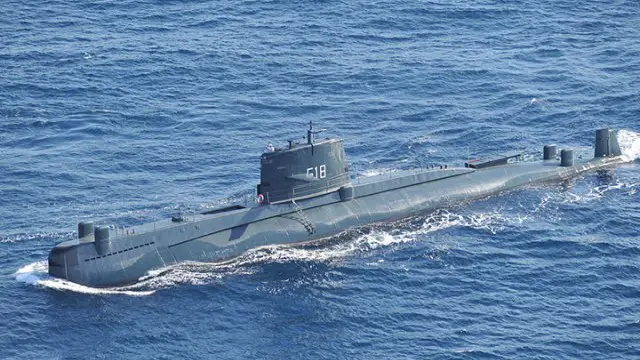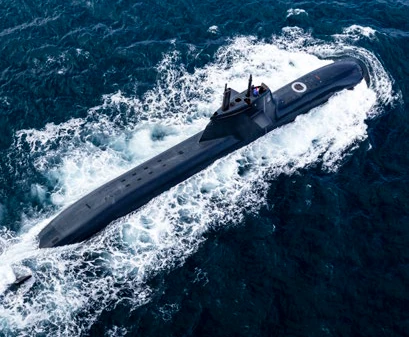The Italian Marina Militare currently has eight submarines. Four of them are of the Todaro Class, i.e. German type U212A. These boats entered service in pairs: Salvatore Todaro and Scirè in 2006 and 2007, respectively, and Pietro Venuti and Romeo Romei in 2016 and 2017. These submarines were built in Italy, collaborating with the German shipyard ThyssenKrupp Marine Systems.
The next four submarines should replace the four Nazario Sauro-class diesel-electric submarines commissioned in 1988-1995 in the Italian Navy. The new submarines are classified as U212 NFS or Next Generation Submarine.

Submarines U212 NFS will receive several changes related to the increase in localization. The combat system will be supplied by the Italian company Leonardo. It is also reported that, compared with the 212A project, the 212 NFS project boats will have a slightly increased length by 1.2 meters and a displacement and partly modified hull contours while maintaining a German-type air-independent power plant on hydrogen fuel cells.
In addition, these submarines will receive lithium-ion batteries, developed in Italy, instead of lead-acid ones. The fluoropolymer coating of the sub will also be Italian. It is claimed to reduce deposit formation and reduce drag.
New boats are being constructed at the shipyard in La Spezia, owned by Fincantieri. The deal is valued at €2.7 billion. Deliveries of the first and second submarines are scheduled for 2027 and 2029, respectively. The main armament of each of the U212 NFS-type submarines will be six 533 mm torpedo tubes, from which it will be possible to launch heavy torpedoes, cruise missiles and underwater drones.
The Italian submarine fleet intends to increase its activity in the Mediterranean. At the same time, NATO believes that at the moment, Italian submarines “are not actively used in the format of alliance missions.” It is planned that the development of the Italian submarine fleet will increase such activity.
U212 NFS Italy vs Germany and Norway Type 212 program
In October 2021, Italy began the submarine construction program to make the most of the chance to return to the diesel submarine market. The submarine market is currently dominated by France and Germany, whose shipyards Naval Group and ThyssenKrupp Marine Systems (TKMS) consistently sell their products overseas. The second group of suppliers are Sweden, the Republic of Korea and the Russian Federation. Against this background, the Italian shipbuilding industry wants to find its export niche. Fincantieri previously built four U212A submarines for the Italian Navy in collaboration with TKMS.
Fincantieri is the prime contractor for the U212NFS (Type 212) program and will handle both the architecture of the submarine and the integration of combat platforms and systems. Unlike the previous U212A submarines, the Italian company will develop all the engineering of the new submarine. As a result, the Italian industry will enter the global submarine market.
The first submarine is planned to be completed by 2026, and it will be delivered in 2027. The delivery of the second submarine is scheduled for 2028.
The Italian shipbuilder says the submarine will have a number of additional features, including better hydrodynamic efficiency and increased autonomy due to increased fuel storage capacity. The submarine will use lithium-ion batteries to improve low-noise performance in tandem with air-independent propulsion (AIP). Changes to the cooling system will allow operation in tropical conditions.
The production of submarines will test the possibilities of Italian shipbuilding to deploy large-scale production of submarines for export.

Germany and Norway are implementing another Type 212 program to build a joint submarine for their navies. It is planned that two submarines will be at the disposal of the German Federal Navy, and four submarines will be in service with the Royal Norwegian Navy. The contract for the construction of submarines worth 5.5 billion euros was signed in July 2021. The Norwegian Defense Materials Agency (NDMA) and the German Procurement Agency BAAINBw are raising the workforce and resources needed to build a new class of submarines. According to calculations, the sub will be designed by 2023. It will most likely be built in Kiel. Norway is investing $350 million in a new submarine maintenance facility.
Todaro Class Submarines
The Italian Navy received the last submarine of the U212A Todaro type in 2017 from a shipyard located in the commune of Lerici (province of La Spezia) and built by Fincantieri.
Romeo Romei is the eighth submarine of the U212A Todaro type and the fourth in the Italian Navy. Another Four were submarines were built for Germany. This submarine type was built as part of the Italian-German program, implemented in 1994.

The submarine has a length of 55.9 m, a diameter of 7 m, and a surface displacement of 1509 tons. The submarine’s hull is built of non-magnetic materials and has a special coating that reduces the acoustic footprint. The MTU 8V183 SE83 anaerobic diesel generator set accelerates the submarine to 16 knots underwater. The submarine type is manned by 27 personnel. This submarine type had six torpedoes tubes for launching 12 Black Shark torpedoes or 24 anti-ship mines.
In 2014, Fincantieri signed a contract with the French company McPhy Energy to build a new anaerobic power plant for the second pair of U212A Todaro submarines. The new plants use hydrogen fuel cell technology based on hydrogen production from stored solid magnesium hydride (MgH2). Magnesium hydride hydrogen storage technology provides about twice the mass percentage of hydrogen in dry matter, which allows the submarine to stay underwater longer. In addition, the second pair of submarines received an optoelectronic mast instead of a second periscope, improved communications, as well as a new version of WASS’s Black Shark torpedoes.
